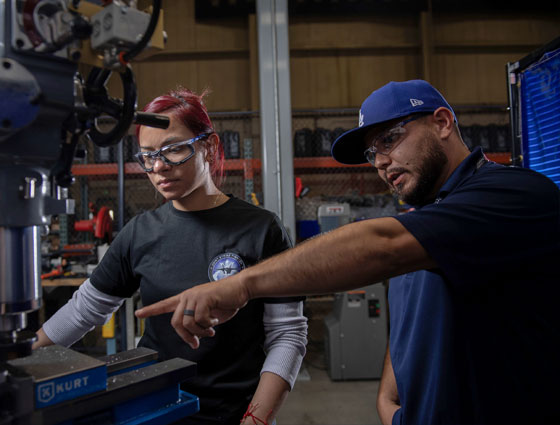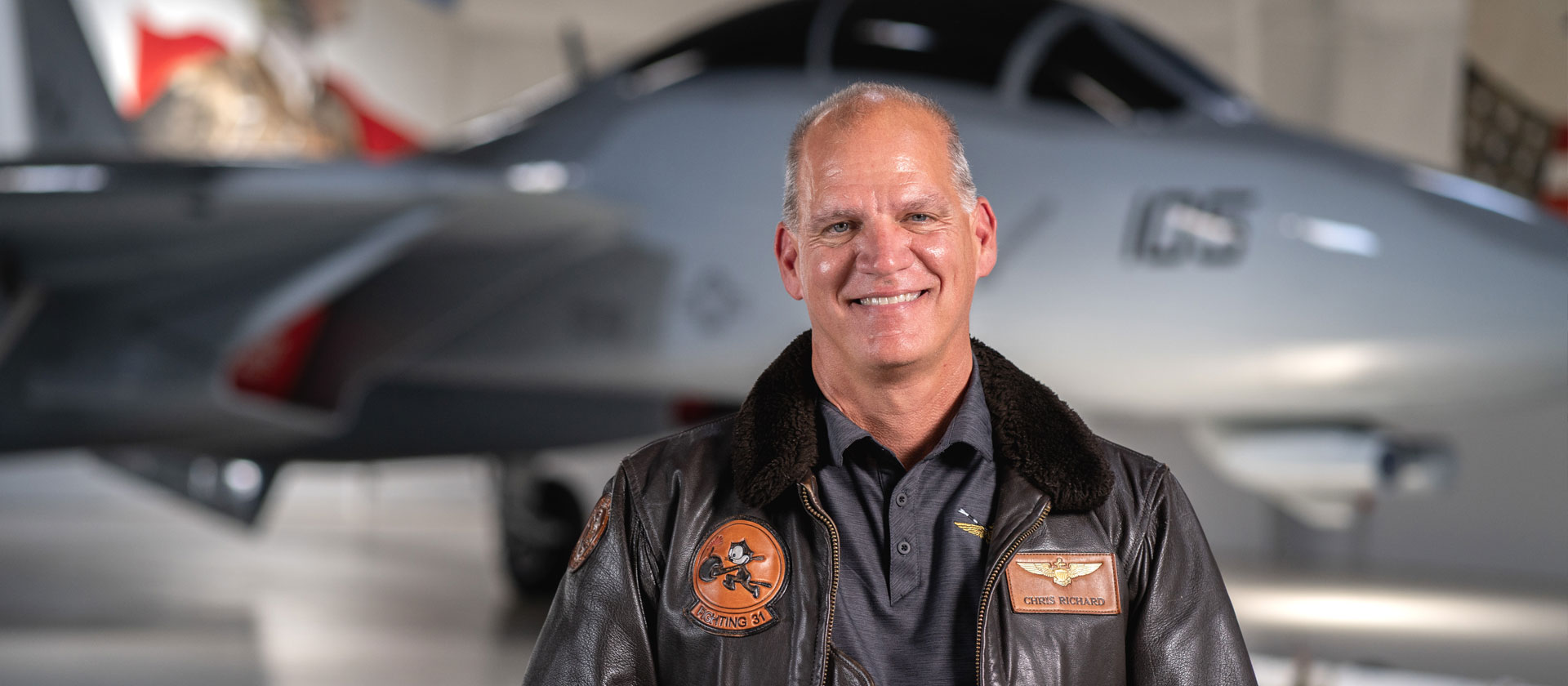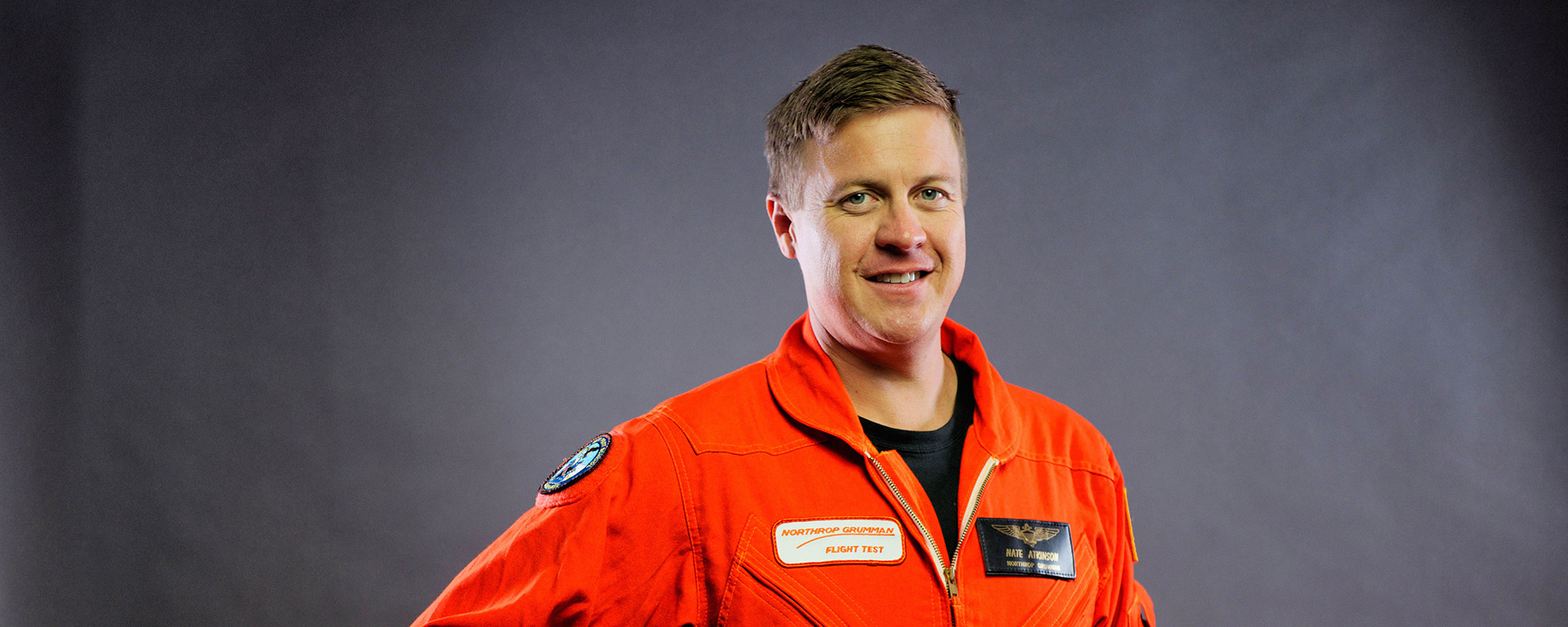Finding a career can be challenging, but ultimately the path leads to the right thing.
Walk in My Shoes: Above the Clouds
From a young age, Lucas Kadar was drawn to aerospace.

By Cassie Mann
From a young age, Lucas Kadar was drawn to aerospace. His childhood dream of becoming a pilot came true when he was commissioned into the U.S. Navy after graduating from the Navy Reserve Officers’ Training Corps (ROTC) at Villanova University.
Lucas spent 24 years in the Navy, serving as a carrier aviator and later a test pilot. While attending the U.S. Navy Test Pilot School in Patuxent River, Maryland, his class visited Northrop Grumman’s Baltimore facility — a moment that would come full circle.
“I remember visiting the campus when I was a student, not realizing this is where I could be 15 years later. When it came time to set myself up for military retirement, I knew I wanted to continue my flight test pilot career,” Lucas said.
The test pilot industry is small, and Lucas had several military friends who were already working for the company. A mix of “timing, luck and personal contacts” came together in 2020 when he applied for a pilot role.
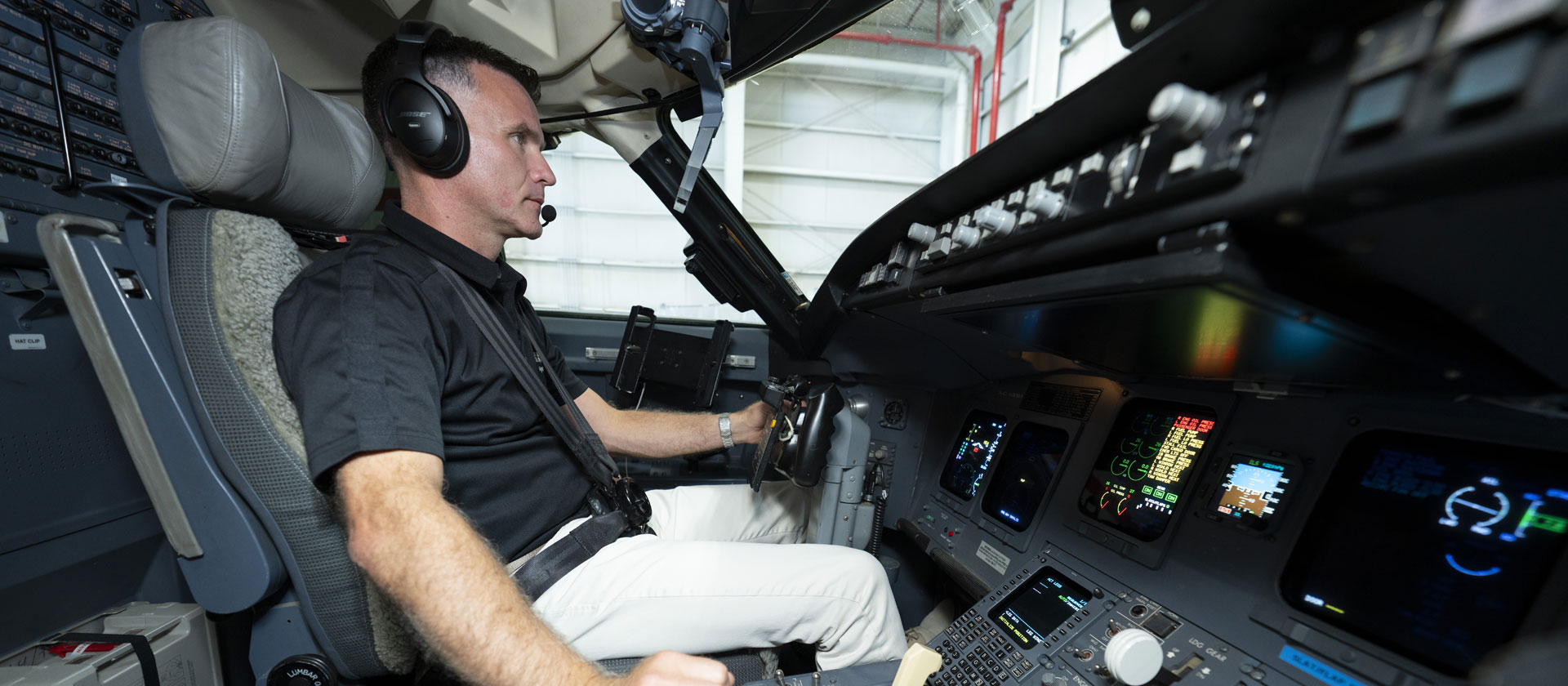
Photo: Lucas flies the company’s fleet of reconfigured CRJ-700s, which support flight testing for over 50 Northrop Grumman programs.
Now, Lucas is a senior staff test pilot in the same hangar he once toured. He flies the company’s fleet of reconfigured CRJ-700s. These airborne testbeds support over 50 programs and log over 1,000 flight hours annually, supporting active-duty customers in military exercises.
“What makes Northrop Grumman’s flight organization unique is the number of projects we support. We can reconfigure our planes in a matter of hours depending on program needs — from equipment on the nose, to under the plane, and everywhere in between,” he said.
Here’s a glimpse into Lucas’ typical day:
5:30 a.m. My day begins with unicorns, glitter and hair as I get my three daughters ready for school. After I send them off, I’ll make my 40-minute commute to the office.
7:30 a.m. I check my email and review the day’s schedule. Every flight requires extensive planning — from airworthiness approvals to safety-of-flight analysis to test profiles.
8 a.m. The mechanic, inspector and flight test engineer prepare the aircraft and test system. It’s been fueled, the program equipment powered up and it’s positioned outside our hangar.
8:30 a.m. Our flight test team holds a mission brief with the program we’re supporting that day. I gather my gear and paperwork and head to the aircraft. We fly with test cards — printed pages that serve as a playbook for the mission, with flight parameters like altitude, air speed, and target ranges.
9:45 a.m. With checks complete and the program ready, we taxi to the runway.
10 a.m. Cleared for takeoff — my favorite part of the day! I line up the aircraft up on the centerline, set the engines to takeoff power, release the brakes and begin our roll. Once we reach speed, I rotate the aircraft into flight. I’ve done this more than 4,000 times, and it’s still a thrill. Once airborne, I’m responsible for safe and efficient operation throughout the mission. We usually transit from Baltimore/Washington International Airport (BWI) to a specific test range, where program engineers begin collecting data.
Noon. On a typical four-hour mission, we eat lunch in the air. My co-pilot and I alternate control so we can enjoy whatever food we’ve packed — sandwiches, sushi , candy, anything.
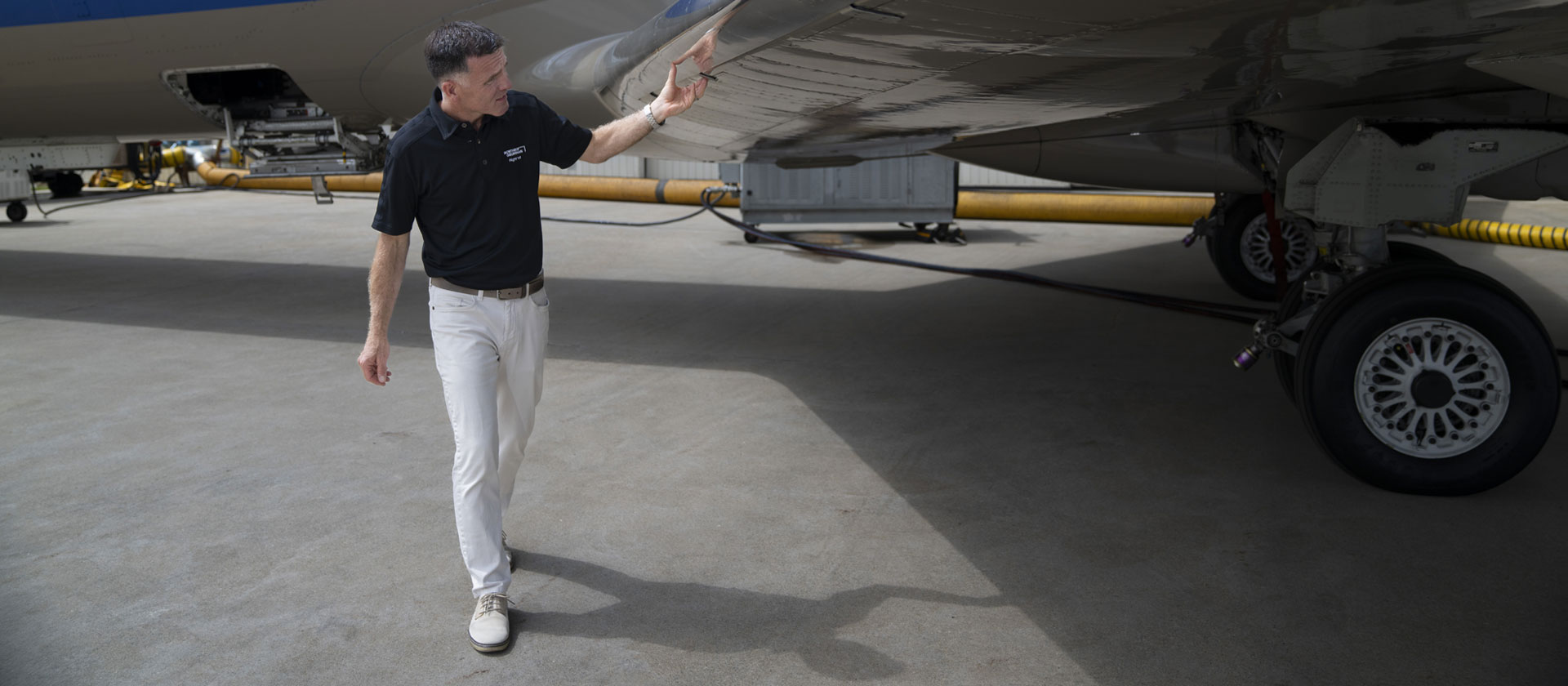
Photo: "I love working for Northrop Grumman because I do what I love — flying, testing and helping advance mission capabilities. That is what makes the work meaningful."
2 p.m. Back on the ground. We debrief the flight, review system performance, confirm if objectives were met and capture lessons learned. Some flights prove a concept, while others finalize systems for delivery. In a recent military exercise off the coast of California, we flew our CRJ in close formations with F-35As and F/A-18Gs — just feet off my wingtip. That kind of flying is rare for CRJs, and a reminder of just how unique my job is.
6 p.m. I head home for dinner and time with my family. On flying days, I reflect on how lucky I am to still be in the cockpit. I love working for Northrop Grumman because I do what I love — flying, testing and helping advance mission capabilities. That is what makes the work meaningful.
Life at Northrop Grumman
Your work at Northrop Grumman makes a difference. Whether you want to design next-generation aircraft, harness digital technologies or build spacecraft that will return humanity to the moon, you’ll contribute to technology that’s transforming the world. Check out our career opportunities to see how you can help define possible.
